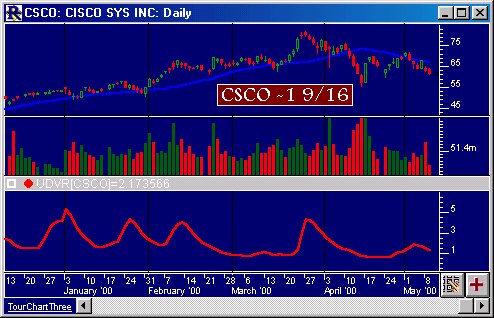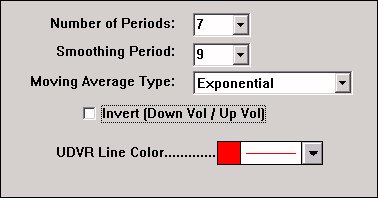The Up/Down Volume ratio compares the representation of buyers vs. sellers over a period of time. The assumption is that if a stock closes UP for the day, the attributable volume was induced by buying pressure and thus the stock is under accumulation. Conversely, if a stock closes DOWN for the day, the trading activity is deemed to be selling induced, a sign of distribution. Up/Down ratio is calculated by creating a ratio of the volume on days when price increased to volume on days when price decreased. For each n-day period: U/D ratio = Sum of Volumes on Up Days Sum of Volume on Down Days This value oscillates around a value of 1. For U/D ratios greater than 1 there have been more buyers than sellers over that time period and the ratio is bullish. U/D ratios less than 1 exhibit more sellers than buyers over the study period and the ratio is bearish.
Presentation

Above is a Daily Candlestick Chart of Cisco Systems (CSCO). The bold red line in the lower window pane represents the Up/Down Volume Ratio as specified in the preferences below. A volume histogram for CSCO can be seen in the middle pane. The bold blue line in the top pane is a Moving Average overlaying the price data.


